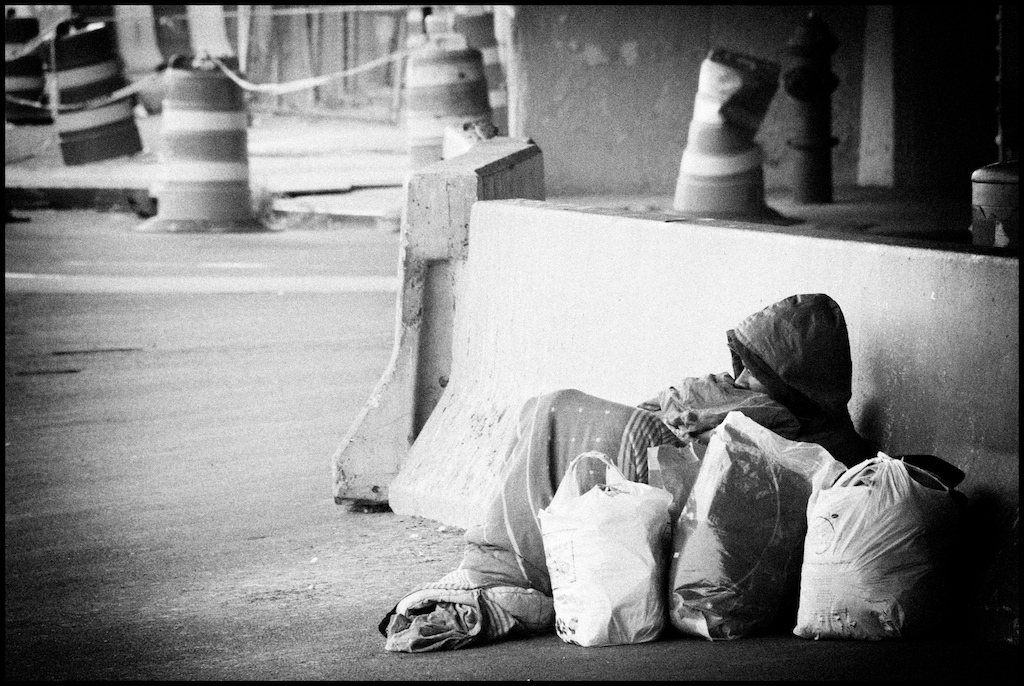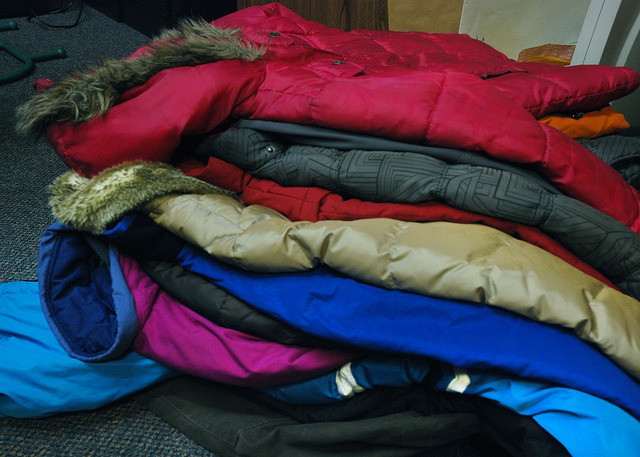
As we get deeper into winter, you might be wondering what you can do to help people experiencing homelessness in your community. Here are five things that everyone can do.
Know shelters aren’t the only solution
Though temporary winter shelters open in most Canadian cities this season, most shelters are overwhelmed when the temperature drops—as was the case in Calgary’s shelters and Waterloo’s shelters in early November.
A lack of space isn’t the only deterrent from staying in shelters, though. They simply don’t work for some people. Judy Graves, an advocate for the homeless, told CBC that “issues like claustrophobia, agoraphobia and mental illnesses can make people wary of being inside.”
In the same article, Graves says people wanting to help those who are shelter-averse can offer them cardboard (to insulate the space between their bodies and cold sidewalks), warm beverages, blankets, or clothing. She also asks people to confirm if the people experiencing homeless are capable of determining if they are warm enough to stay outside. If they’re not, it’s best to call 911.
Find out if there are warming centres nearby
While not everyone will want to go indoors, extreme temperatures can do a lot of harm and passers-by often want to ask people to do so. In her post on the topic, Tanya Gulliver-Garcia wrote.
“As a community of caring citizens, we can ask the individual directly and if turned down call a local outreach service or street patrol to get them to check on them. Provide them with warm blankets, clothing and hot beverages if they are insistent on staying outside. If you’re really worried, call 911 (a sign of hypothermia by the way, is the removal of clothing).”
If you don’t know where the warming centres in your community are, most municipalities have 211 (non-profit organizations) and/or 311 (city services) telephone lines that provide this information.
Donate winter clothing and blankets
Have some extra blankets or winter coats? Now is a great time to take them to your local shelter or donation centre.

During Winnipeg’s late November cold snap, Siloam Mission’s Judy Richici told CTV that they’re “always looking for layering effects.” So long johns, scarves, warm socks, hats, mittens, undershirts, and good quality jeans all make good donations at this time of year.
If you’re interested in giving more than winter clothing, Tanya Gulliver-Garcia has two posts worth reading. The first is about donations and what to give, and the second covers panhandling and other ways to give money. It’s generally a good idea to call the organization ahead of time, though, to find out exactly what they need, if anything. Sometimes shelters and charities are operating with limited space and staff and cannot manage all their donations.
Support a local organization or shelter
If you have the time, consider volunteering at an organization or shelter that supports people experiencing homelessness. Most of these places can always use additional help, especially during the winter.
If you’re short on time, these organizations also appreciate financial support. Each one outlines where their donations go (usually in reports on their websites), so you can get a very clear picture of what your money is used for.
Support Housing First and affordable housing initiatives
Finally, while helping people experiencing homelessness stay warm in extreme temperatures is important, we must also move beyond emergency interventions and address homelessness as a long-term, broader issue.
At the Homeless Hub, we promote the Housing First model, which works to provide housing for people before other issues such as unemployment or addictions are addressed. This approach has been successful in several Canadian cities, as summarized in our 2013 book, Housing First in Canada. This, in combination with creating more affordable housing, would make enormous gains in terms of reducing homelessness and emergency services.
To advocate for these initiatives, use your voice! Vote for representatives who have a good strategy to address homelessness and build more affordable housing, and write to those who do not. Connect with likeminded people or community organizations that are also concerned about homelessness and affordable housing, as they often run outreach campaigns you can be a part of. When it comes to ending homelessness, every bit of effort counts.
This post was republished with permission from The Homeless Hub.